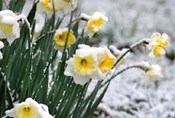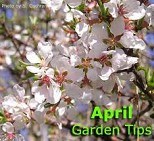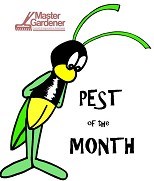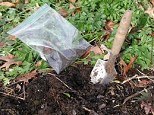Q: What is a frost-free date and how does this affect gardening? - Kate, Olivebridge
A: Most perennials, shrubs and trees aren’t affected by freeze and frost dates, but if you’re planting annuals or vegetables, these are details you need to know. Many vegetables, including tomatoes, green beans, squash, cucumbers, pumpkins, peppers and corn, don’t tolerate even a light frost. Annual flowers, such as petunias, nasturtiums and morning glories, among others, can’t tolerate cold temperatures either. Plant them out too early and they’ll likely be stunted or killed.
Conversely, these crops are usually the first to be killed in the fall by cold weather.
A frost date is the average date of the first or last light freeze that occurs in spring or fall. Note that local weather and topography may cause considerable variations. The possibility of frost occurring after the given spring dates and before the given fall dates is 50 percent. The classification of freeze temperatures is based on their effect on plants:
Light freeze: 29 to 32 degrees F. — tender plants are killed.
Moderate freeze: 25 to 28 degrees F. — widely destructive to most vegetation.
Severe freeze: 24 degrees F. and colder — heavy damage to most plants.
Frost dates are calculated based on data from the NOAA National Centers for Environmental Information. Knowing the last frost date for your area is important. Your gardening schedule will be partly determined by the date of your average last frost and the frost date isn’t just for springtime. Whether you’re starting your seeds indoors, buying transplants from a nursery, or planting seeds directly in your garden, you’ll want to coordinate your schedule with the last frost date. That doesn’t necessarily mean you’ll wait until the last spring frost to plant. If you want to get an early start to the gardening season, there’s plenty of things you can do to provide frost protection for your plants. But no frost protection methods are invincible, so the earlier you start your season, the greater the risk. And the greater the potential reward, as well!
In Ulster County we use May 15 as our average last frost date. But because of the effect of the mountains and the Hudson River we will have differences, micro-climates. We have had killing frosts as late as May 20, so we suggest planting after Memorial Day for most annuals and vegetables.
For areas where the growing season is long enough to plant a fall garden, the first frost date will also be of importance.
Q: Will my daffodils be harmed by freezing temperatures? - Donna, Kingston
A: Most daffodils seem to be particularly resistant to the cold, wet spring precipitation. An extended freeze, with daytime temperatures that remain below 29 degrees, might cause some damage, but an overnight frost will generally not cause any lasting damage to these tough little bulbs. Adding a mulch of dry leaves can be helpful if the temperature is going to drop much below 20 degrees or the freeze is expected to continue for an extended period of time. Preparing your daffodils to survive a late frost can mean watering them thoroughly during the day. The water makes the cells inside the plants expand, helping prevent an internal freeze when the temperatures drop. The water also helps keep the soil, and therefore the plants, warmer.
Dona M. Crawford is the community horticulture educator at the Cornell Cooperative Extension of Ulster County.





